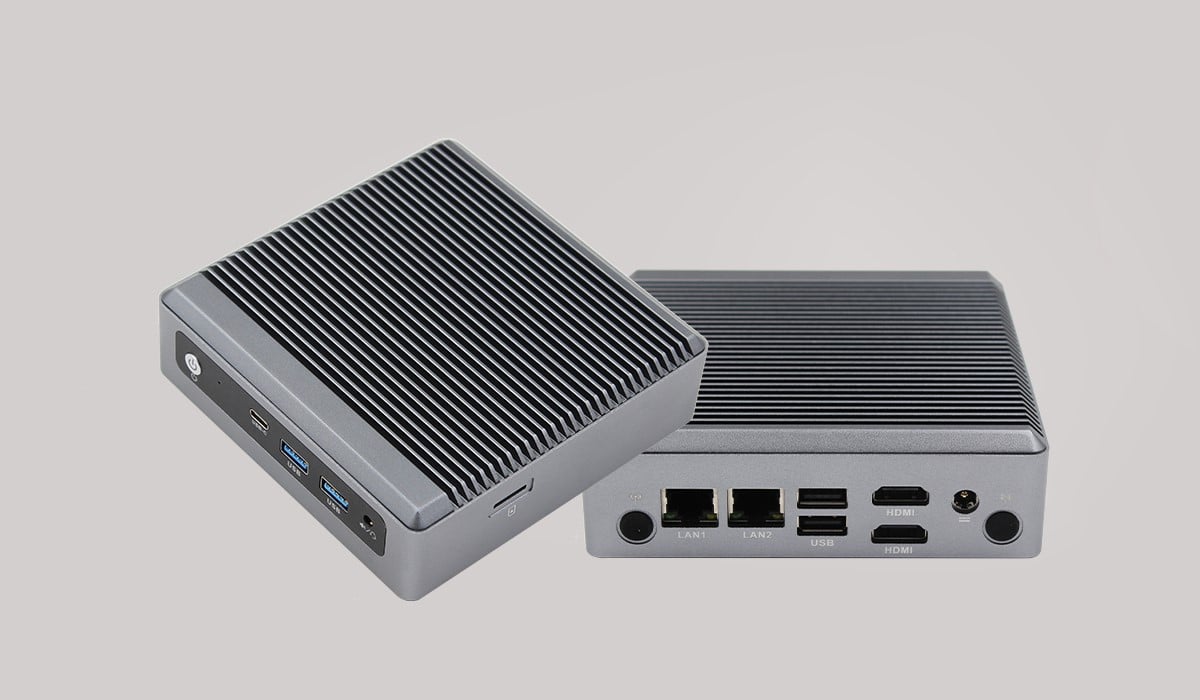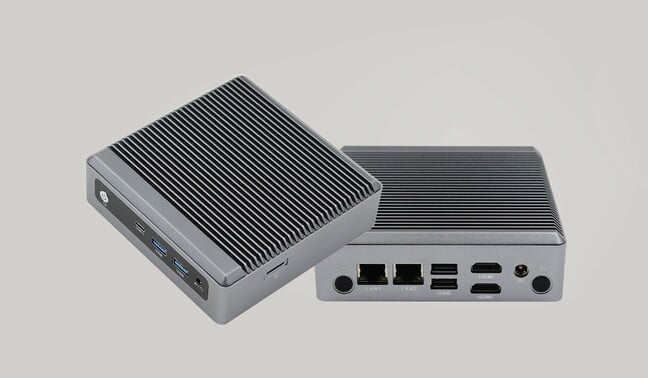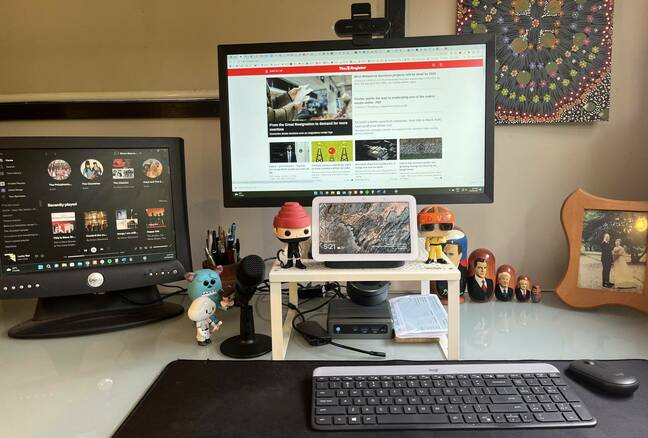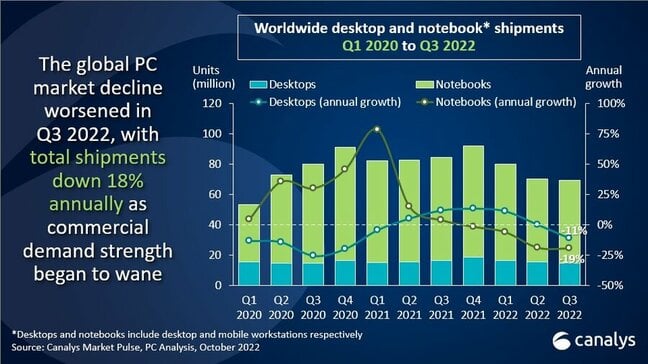
[ad_1]
Desktop Tourism I just got a desktop computer, and the modest machine is the most fun I’ve had during my year of Desktop Tourism – the project that has seen me test a different client device every month since March 2022.
The machine is a Maxtang NX6412 – a Chinese brand – powered by a humble quad-core 10nm Intel Celeron with 1.5MB L2 Cache that clocks up to 2.6GHz. The box is sold as a bare bones affair for around $300. I got a 256GB SSD, 8GB RAM, USB-A Wi-Fi and Bluetooth dongle, and a gray market Windows license, for under $80.
The computer is more than enough for my daily surfing, typing, streaming video or audio, and cranking out some kms in the cycling metaverse Zwift.
I expect that level of performance from any computer these days.

The Maxtang NX6412 Mini PC – Click to enlarge
Where this one shines is its impressive array of ports on the back: twin HDMIs, a pair of USB-A 2.0 outlets, and twin RJ-45s. I snuck an old USB hub into one of the USB-A ports and plugged in all the stuff I find myself swapping in and out of my laptop – a webcam, a proper microphone, a USB speaker and a Logitech wireless input device connector – and then just let them hangs out of sight.
The devices are connected 24/7 and all their cables are hidden behind the computer and under my monitor stand. My desk is tidier than it has been in years.
With one exception: a blue HDMI to DisplayPort cable (which I don’t remember getting) that snakes a short distance from the computer’s second HDMI port to drive an ancient Dell 13″ LCD monitor (which I remember getting in 2002 or 2003) and which now offers an additional 1024×768 of desktop real estate.

The recently ordered Vulture East Home Annex feat. Maxtang mini computer – Click to enlarge
I love this setup because I use laptop screens as a secondary display and therefore have to run a lot of cables across the desk to get to their small collection of ports. My desktop just sits under my monitor stand with everything connected and I never need to look for cables or devices. None of the peripherals I use require the pre-mounted USB 3.0 ports.
Yes, I could get a dock or port replicator and achieve a similarly neat setup for a laptop. But such devices cost about as much as the desktop I now enjoy and are often tied to a particular brand of laptop.
A port replicator or dock would also leave the laptop free to roam, which I decided I didn’t want.
When I use a laptop in my home office, which is in a sturdy garden shed, I pack it up at the end of the day and bring it into the house, where it tempts me to use it again for just one more email, or look at it. The Register to make sure I didn’t leave a mistake on the first page.
Now that I have a desktop, my mindset has changed and I stay in the home office to complete a day’s work and then make a mental and physical switch to home (despite the fact that I also use a smartphone, tablet and e-reader each). day).
My desktop setup is not a panacea. My slightly nasty workload test – downscaling five minutes of 4K video to HD using the open-source video conversion tool Handbrake – ran for 11:59. That’s quite a bit longer than on any other machine I’ve tested that’s capable of the feat. The Maxtang does not enjoy running VMware Workstation: in an Ubuntu VM with 2GB of memory the drop test limped to an expected working time of 53:00, but during several tests Handbrake decided that mysteriously stopping is preferable to finishing the job.
I also ran Cinebench’s free imaging tool, which scored the machine at 1,581. The fastest system in the Cinebench charts scored 30,054 thanks to its 32-core AMD Threadripper at 3GHz.
Power this is not!
Where does the desktop belong?
The unexpected pleasure of using a desktop made me think about their role. Desktops hold about 20 percent of the PC market and as the Canalys graph below shows, shipments of the machines have declined more slowly than has been the case for laptops.

Canalys PC sales statistics Q3 2022 – Click to enlarge
Predictably, the desktop market has taken hold, as there are many roles in which only a desktop will perform. There are only so many GPUs, fans and drives that gamers and content creators can fit into a laptop.
The Maxtang will never satisfy a gamer, CAD user, or developer who needs VMs to run crisp. But it’s perfectly capable of handling everyday productivity tasks.
The big foray into the computer market in recent years has been just pretty good laptops in the form of the Chromebook.
Maybe it’s time to think about good enough desktops too – especially now that hybrid work is the new normal. I am often told that the two or three days a week of home work, which is now allowed for many workers, requires tools adapted to these new circumstances. It is important to ensure that people are as productive as possible now that the office is not a daily destination.
Tidying up my workspace and freeing up my laptop for when it’s really needed, my mini desktop is that tool. And I think it could be yours too, if like me you’re lucky enough to have a dedicated work from home space. ®
[ad_2]
Source link
